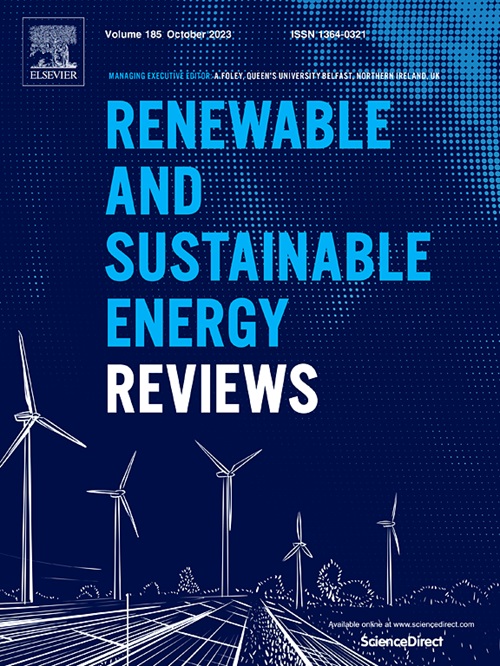Role and trends of flexibility options in 100% renewable energy system analyses towards the Power-to-X Economy
IF 16.3
1区 工程技术
Q1 ENERGY & FUELS
引用次数: 0
Abstract
Flexibility options are essential components in highly renewable energy systems due to the inherent variability of renewable energy sources, such as solar photovoltaics and wind power. The adoption of renewable energy aligns with the United Nations Sustainable Development Goal 7, ensuring access to affordable, reliable, sustainable, and modern energy for all. This study investigates the impact of flexibility alternatives within the framework of 100% renewable energy systems through a systematic literature review to identify energy system analyses of at least 95% renewable energy supply for at least one sector in at least one scenario. 1067 articles from 1975 to 2023 were analysed to understand the functionality of flexibility options in highly renewable energy systems. The identified flexibility options include power-to-X, energy storage, demand response, power grids, and curtailment. The results indicate that within the field of 100% renewable energy systems, electricity-based solutions have emerged as the default. Various electricity-based fuels are used, with e-hydrogen and e-methane being the most widely discussed in 46% and 19% of articles, followed by Fischer-Tropsch and e-methanol with 3% of studies, respectively. Battery storage is covered by 60% of articles, followed by e-fuels options, and pumped hydro energy storage. Demand response was identified as the least included method. 46% of the articles highlight the role of transmission grids and 25% include curtailment. Early 100% renewable energy system analyses focused on flexibility in the power sector, whereas the shift of studies to a Power-to-X Economy has broadened research to flexibility options across the entire energy-industry system.

求助全文
约1分钟内获得全文
求助全文
来源期刊

Renewable and Sustainable Energy Reviews
工程技术-能源与燃料
CiteScore
31.20
自引率
5.70%
发文量
1055
审稿时长
62 days
期刊介绍:
The mission of Renewable and Sustainable Energy Reviews is to disseminate the most compelling and pertinent critical insights in renewable and sustainable energy, fostering collaboration among the research community, private sector, and policy and decision makers. The journal aims to exchange challenges, solutions, innovative concepts, and technologies, contributing to sustainable development, the transition to a low-carbon future, and the attainment of emissions targets outlined by the United Nations Framework Convention on Climate Change.
Renewable and Sustainable Energy Reviews publishes a diverse range of content, including review papers, original research, case studies, and analyses of new technologies, all featuring a substantial review component such as critique, comparison, or analysis. Introducing a distinctive paper type, Expert Insights, the journal presents commissioned mini-reviews authored by field leaders, addressing topics of significant interest. Case studies undergo consideration only if they showcase the work's applicability to other regions or contribute valuable insights to the broader field of renewable and sustainable energy. Notably, a bibliographic or literature review lacking critical analysis is deemed unsuitable for publication.
 求助内容:
求助内容: 应助结果提醒方式:
应助结果提醒方式:


